Showing Spotlights 41 - 48 of 48 in category All (newest first):
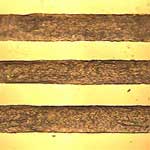 The prospect of stretchable electronics opens some exciting possibilities - for instance, think about artificial skin with an integrated, stretchable touchscreen display. To get there, researchers have begun developing elastic electrical wiring that is both highly conductive and highly stretchable. Currently existing stretchable materials do already exhibit excellent conductivity and mechanical stretchability but they have one major disadvantage: their manufacturing processes are not readily scalable, which means it is difficult or cost-prohibitive to apply them to large-area electronics. A research team in Japan has now successfully fabricated, for the first time, novel elastic conductors that can be directly patterned by printing processes. This novel, printable elastic conductor comprises single-walled carbon nanotubes uniformly dispersed in a highly elastic fluorinated copolymer rubber.
The prospect of stretchable electronics opens some exciting possibilities - for instance, think about artificial skin with an integrated, stretchable touchscreen display. To get there, researchers have begun developing elastic electrical wiring that is both highly conductive and highly stretchable. Currently existing stretchable materials do already exhibit excellent conductivity and mechanical stretchability but they have one major disadvantage: their manufacturing processes are not readily scalable, which means it is difficult or cost-prohibitive to apply them to large-area electronics. A research team in Japan has now successfully fabricated, for the first time, novel elastic conductors that can be directly patterned by printing processes. This novel, printable elastic conductor comprises single-walled carbon nanotubes uniformly dispersed in a highly elastic fluorinated copolymer rubber.
May 20th, 2009
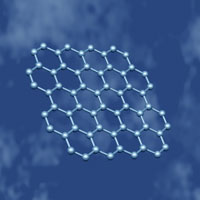 Following up on yesterday's Spotlight about graphene quantum dots, today we look at what might be the first realistic application of this revolutionary material. Back in December we reported on the development of transparent and conductive graphene-based composites for use as window electrodes in solid-state dye sensitized solar cells. While the researchers who conducted this work produced graphene by chemical oxidation of graphite, a multi-step process, new results from the University of Manchester group that discovered graphene in 2004 show a simpler route to producing graphene films that cannot only be used for solar cells but might be well suited for liquid crystal displays.
Following up on yesterday's Spotlight about graphene quantum dots, today we look at what might be the first realistic application of this revolutionary material. Back in December we reported on the development of transparent and conductive graphene-based composites for use as window electrodes in solid-state dye sensitized solar cells. While the researchers who conducted this work produced graphene by chemical oxidation of graphite, a multi-step process, new results from the University of Manchester group that discovered graphene in 2004 show a simpler route to producing graphene films that cannot only be used for solar cells but might be well suited for liquid crystal displays.
Apr 24th, 2008
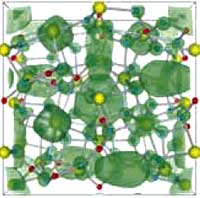 Many of us don't like to admit it, but televisions are an important part of our lives. Technology has improved the quality and convenience of TVs and has given us a whole new set of choices - high definition, plasma, and liquid crystal displays. With an estimated 66 million sets to be sold this year, flat-screen LCD televisions are the most popular choice. Much of the reason behind the popularity of these high-tech wonders is the decrease in price that happens with most cool technology - a few years after they have been on the market. But, for the popular LCD TV, a shortage of a key compound used to produce LCDs may force manufacturers to raise prices. Electronics suppliers are facing a shortage of the rare metal indium, a co-product of zinc mining. Indium is a rare, malleable and easily fused metal, similar to aluminum, which is used to make indium tin oxide (ITO), the standard transparent electrode used in nearly all flat panel displays and microdisplays. Indium is expensive and scarce and demand is increasing. According to Displaybank, the demand for indium was 861 tons in 2006 and may reach nearly 2000 tons by 2011. Five years ago, indium was about $100/ kg; now it costs $800/kg. Displaybank expects the total sales of indium in 2007 to be $533 million. But, geologists say the cost of indium may not matter soon, because the earth's supply of it could be gone in four years. This could put a serious damper on that 52" LCD screen you've been dreaming about. Fortunately, with the help of nanotechnology, a team of scientists in Japan have developed a new material that may replace the need for indium in LCD production.
Many of us don't like to admit it, but televisions are an important part of our lives. Technology has improved the quality and convenience of TVs and has given us a whole new set of choices - high definition, plasma, and liquid crystal displays. With an estimated 66 million sets to be sold this year, flat-screen LCD televisions are the most popular choice. Much of the reason behind the popularity of these high-tech wonders is the decrease in price that happens with most cool technology - a few years after they have been on the market. But, for the popular LCD TV, a shortage of a key compound used to produce LCDs may force manufacturers to raise prices. Electronics suppliers are facing a shortage of the rare metal indium, a co-product of zinc mining. Indium is a rare, malleable and easily fused metal, similar to aluminum, which is used to make indium tin oxide (ITO), the standard transparent electrode used in nearly all flat panel displays and microdisplays. Indium is expensive and scarce and demand is increasing. According to Displaybank, the demand for indium was 861 tons in 2006 and may reach nearly 2000 tons by 2011. Five years ago, indium was about $100/ kg; now it costs $800/kg. Displaybank expects the total sales of indium in 2007 to be $533 million. But, geologists say the cost of indium may not matter soon, because the earth's supply of it could be gone in four years. This could put a serious damper on that 52" LCD screen you've been dreaming about. Fortunately, with the help of nanotechnology, a team of scientists in Japan have developed a new material that may replace the need for indium in LCD production.
Sep 14th, 2007
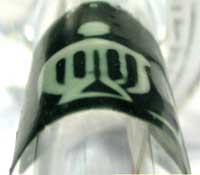 Thin, flexible displays have become an everyday component in many electronic gadgets from cell phones to digital cameras and MP3 players. Most of these displays are based on LCD technology, liquid crystals combined with polymeric structures, and one of their drawbacks is that their manufacturing cost grows rapidly with increasing screen size. A recently developed alternative approach for thin, flexible displays makes use of thermochromic composite thin-films. Thermo- chromism is the ability of a substance to change color due to a change in temperature. This first of a kind thermochromic display is based on films with thermochromic nanoparticles and embedded conductive wiring patterns. Based on the ease of fabrication and simple architecture, thermochromic displays could have advantages in lowering the display unit cost and, due to their heating pulse control scheme, can also lower power consumption compared with conventional displays.
Thin, flexible displays have become an everyday component in many electronic gadgets from cell phones to digital cameras and MP3 players. Most of these displays are based on LCD technology, liquid crystals combined with polymeric structures, and one of their drawbacks is that their manufacturing cost grows rapidly with increasing screen size. A recently developed alternative approach for thin, flexible displays makes use of thermochromic composite thin-films. Thermo- chromism is the ability of a substance to change color due to a change in temperature. This first of a kind thermochromic display is based on films with thermochromic nanoparticles and embedded conductive wiring patterns. Based on the ease of fabrication and simple architecture, thermochromic displays could have advantages in lowering the display unit cost and, due to their heating pulse control scheme, can also lower power consumption compared with conventional displays.
Jun 14th, 2007
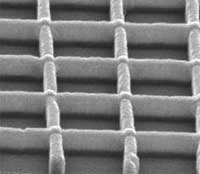 OLEDs - organic light-emitting diodes - are full of promise for a range of practical applications not too far into the future. Today, OLEDs are used in small electronic device displays in mobile phones, MP3 players, digital cameras, etc. With more efficient and cheaper OLED technologies we soon will see ultraflat, very bright and power-saving OLED televisions, windows that could be used as light source at night, and large-scale organic solar cells. In contrast to regular LEDs, the emissive electroluminescent layer of an OLED consists of a thin-film of organic compounds. What makes OLEDs so attractive is that they do not require a backlight to function. Thus they draw far less power and, when powered from a battery, can operate longer on the same charge. OLED devices can be made thinner and lighter than comparable LED devices. Last but not least, OLEDs can be printed onto almost any substrate with inkjet printer technology, making new applications like displays embedded in clothes or roll-up displays possible. Unfortunately there are also drawbacks to this technology. Apart from its currently high manufacturing cost, the major problem is device degradation and the limited lifetime of organic materials. In particular, the most commonly used material for the anode, ITO (indium tin oxide), is a less than optimal material for future high-performance OLEDs. New research indicates that nanoimprinted semitransparent metal electrodes, replacing ITO electrodes, are an attractive and potentially practical solution for OLEDs and other organic devices.
OLEDs - organic light-emitting diodes - are full of promise for a range of practical applications not too far into the future. Today, OLEDs are used in small electronic device displays in mobile phones, MP3 players, digital cameras, etc. With more efficient and cheaper OLED technologies we soon will see ultraflat, very bright and power-saving OLED televisions, windows that could be used as light source at night, and large-scale organic solar cells. In contrast to regular LEDs, the emissive electroluminescent layer of an OLED consists of a thin-film of organic compounds. What makes OLEDs so attractive is that they do not require a backlight to function. Thus they draw far less power and, when powered from a battery, can operate longer on the same charge. OLED devices can be made thinner and lighter than comparable LED devices. Last but not least, OLEDs can be printed onto almost any substrate with inkjet printer technology, making new applications like displays embedded in clothes or roll-up displays possible. Unfortunately there are also drawbacks to this technology. Apart from its currently high manufacturing cost, the major problem is device degradation and the limited lifetime of organic materials. In particular, the most commonly used material for the anode, ITO (indium tin oxide), is a less than optimal material for future high-performance OLEDs. New research indicates that nanoimprinted semitransparent metal electrodes, replacing ITO electrodes, are an attractive and potentially practical solution for OLEDs and other organic devices.
Jun 7th, 2007
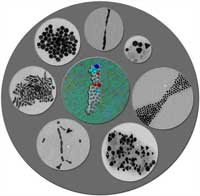 Liquid crystal displays (LCD) have become an integral part of our everyday life. LCDs are everywhere, on your digital watches, cameras, iPods, laptop computers, television screens or car navigation displays. LCDs get their name from the special liquid crystal solution that is contained between two thin glass plates inside the display. Recent research findings suggest that embedding doped metal nanoparticles (MNP) in liquid crystal materials increases the performance of certain display devices. So far, however, the main problem with this approach has been that the inclusion of nanoparticles destabilizes the LC material. Researchers have now succeeded in synthesizing metal nanoparticle embedded stable liquid crystals in a single step, without using any external reducing and stabilizing agents. As a bottom-up strategy, this work is a further step towards synthesizing three-dimensional macro structures using small nanoparticles as building blocks, and an elegant method in fabricating soft organic architectures; particularly when it is combined with electronic, magnetic or photonic properties of inorganic materials.
Liquid crystal displays (LCD) have become an integral part of our everyday life. LCDs are everywhere, on your digital watches, cameras, iPods, laptop computers, television screens or car navigation displays. LCDs get their name from the special liquid crystal solution that is contained between two thin glass plates inside the display. Recent research findings suggest that embedding doped metal nanoparticles (MNP) in liquid crystal materials increases the performance of certain display devices. So far, however, the main problem with this approach has been that the inclusion of nanoparticles destabilizes the LC material. Researchers have now succeeded in synthesizing metal nanoparticle embedded stable liquid crystals in a single step, without using any external reducing and stabilizing agents. As a bottom-up strategy, this work is a further step towards synthesizing three-dimensional macro structures using small nanoparticles as building blocks, and an elegant method in fabricating soft organic architectures; particularly when it is combined with electronic, magnetic or photonic properties of inorganic materials.
May 4th, 2007
 Carbon nanotubes (CNTs) are considered the most promising material for field emitters and a practical example are CNTs as electron emitters for field emission displays (FED). CNT emitters are generally fabricated by indirect growth methods such as screen-printing and electrophoresis. These methods show advantages in lowering the coating temperature and scale-up of the substrate size, but the direction of CNTs cannot be well controlled and a post-treatment process is generally necessary to enhance the performance of CNT emitters. In contrast to the indirect method, chemical vapor deposition (CVD) is a common technique for growing nanotubes directly on the substrate with the assistance of metallic catalysts. With the CVD method, CNTs can be grown at desired locations with a specified direction. However,most synthesis technologies such as conventional thermal CVD or plasma enhanced CVD are performed at temperatures over 500 C, which may restrict the application of CNTs on plastic substrates. Therefore, lowering the growth temperature for CNTs is one of the important directions for facilitating CNT applications.
Carbon nanotubes (CNTs) are considered the most promising material for field emitters and a practical example are CNTs as electron emitters for field emission displays (FED). CNT emitters are generally fabricated by indirect growth methods such as screen-printing and electrophoresis. These methods show advantages in lowering the coating temperature and scale-up of the substrate size, but the direction of CNTs cannot be well controlled and a post-treatment process is generally necessary to enhance the performance of CNT emitters. In contrast to the indirect method, chemical vapor deposition (CVD) is a common technique for growing nanotubes directly on the substrate with the assistance of metallic catalysts. With the CVD method, CNTs can be grown at desired locations with a specified direction. However,most synthesis technologies such as conventional thermal CVD or plasma enhanced CVD are performed at temperatures over 500 C, which may restrict the application of CNTs on plastic substrates. Therefore, lowering the growth temperature for CNTs is one of the important directions for facilitating CNT applications.
Sep 1st, 2006
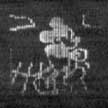 Researchers from the Zhengzhou Institute of Aeronautical Industry Management have developed a set of techniques to reduce the high cost of fabricating carbon nanotube field emission displays.
Researchers from the Zhengzhou Institute of Aeronautical Industry Management have developed a set of techniques to reduce the high cost of fabricating carbon nanotube field emission displays.
May 16th, 2006
 The prospect of stretchable electronics opens some exciting possibilities - for instance, think about artificial skin with an integrated, stretchable touchscreen display. To get there, researchers have begun developing elastic electrical wiring that is both highly conductive and highly stretchable. Currently existing stretchable materials do already exhibit excellent conductivity and mechanical stretchability but they have one major disadvantage: their manufacturing processes are not readily scalable, which means it is difficult or cost-prohibitive to apply them to large-area electronics. A research team in Japan has now successfully fabricated, for the first time, novel elastic conductors that can be directly patterned by printing processes. This novel, printable elastic conductor comprises single-walled carbon nanotubes uniformly dispersed in a highly elastic fluorinated copolymer rubber.
The prospect of stretchable electronics opens some exciting possibilities - for instance, think about artificial skin with an integrated, stretchable touchscreen display. To get there, researchers have begun developing elastic electrical wiring that is both highly conductive and highly stretchable. Currently existing stretchable materials do already exhibit excellent conductivity and mechanical stretchability but they have one major disadvantage: their manufacturing processes are not readily scalable, which means it is difficult or cost-prohibitive to apply them to large-area electronics. A research team in Japan has now successfully fabricated, for the first time, novel elastic conductors that can be directly patterned by printing processes. This novel, printable elastic conductor comprises single-walled carbon nanotubes uniformly dispersed in a highly elastic fluorinated copolymer rubber.
 Subscribe to our Nanotechnology Spotlight feed
Subscribe to our Nanotechnology Spotlight feed





